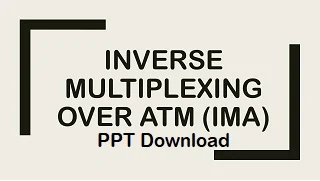Inverse Multiplexing for ATM (IMA) is a technique of transporting ATM traffic over a bundle of T1 or E1 interfaces. The ATM Forum defines Inverse Multiplexing over ATM (IMA), which round-robins ATM cells across two or more physical T1 links in a logical bundle. The Forum has published two versions of the IMA specification AF-PHY-0086.001.
Asynchronous Transfer Mode (ATM) is a high-speed networking technology that handles data in fixed-size units called cells. It enables high-speed communication between edge routers and core routers in an ATM network. ATM is designed to facilitate the simultaneous handling of various types of traffic streams (voice, data, and video) at very high speeds over a dedicated connection. ATM uses asynchronous time-division multiplexing (TDM) and it encodes data into 53-byte cells, thereby simplifying the design of hardware and enabling it to quickly determine the destination address of each cell. ATM operates over either fiber optic cables or twisted-pair cables.
Each ATM PIC is assigned an ATM switch ID that displays the switch’s IP address and the local interface names of the adjacent Fore ATM switches.
This Inverse multiplexing over ATM (IMA) ppt contains brief information about Inverse multiplexing over ATM (IMA). Kindly follow the links given in the references slide of Inverse multiplexing over ATM (IMA) ppt. To download Inverse multiplexing over ATM (IMA) ppt simply click on the link given below.


0 comments